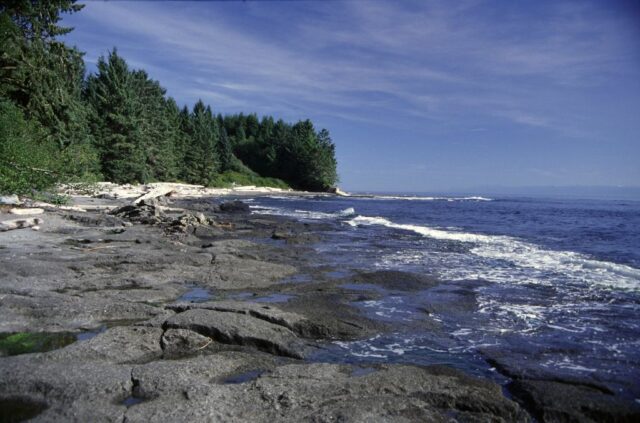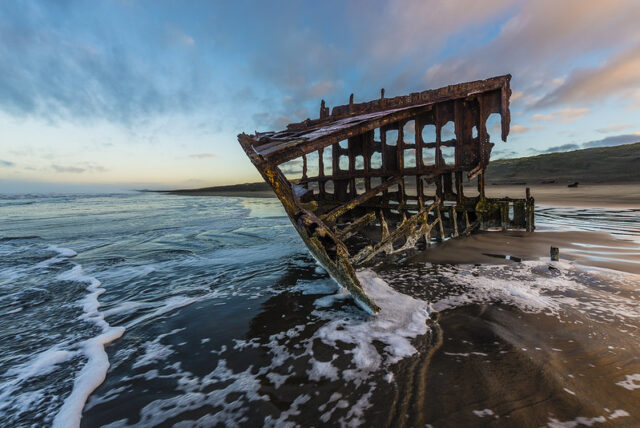Ocean voyages are not always smooth sailing, and that was especially true hundreds of years ago. While many areas of the world are easy to travel, some are naturally more dangerous than others. The Graveyard of the Pacific is one of the treacherous regions. This stretch of coast earned its somber nickname because it’s been the site of thousands of wrecked ships since heavy travel began there in the 18th century.
Graveyard of the Pacific
Located on the western coast of North America, the Graveyard of the Pacific spans from Tillamook Bay in Oregon up to Cape Scott at the northern tip of Vancouver Island in Canada. The area received its name quite early on when there was a sharp increase in travel due to the fur trade. The people who named the site might have been hoping to help others avoid meeting a tragic end in the watery depths.



It’s unnaturally common for this area to experience dangerous weather conditions like dense fog and intense storms, contributing to the number of shipwrecks. If this wasn’t bad enough, the physical shoreline is also extremely dangerous and rocky. Some sandbars shift locations, and there are rip tides and rocky reefs.
Dangerous waters
Along the western coast of Vancouver Island lie the rocky reefs that can easily damage the sides of vessels. The Columbia Bar, a massive sandbar, sits at the entrance to the Columbia River and is considered one of the most dangerous bar crossings in the world. The river also contributes to some of the strong currents in the area, similar to those in the area of the Strait of Juan de Fuca.



Ships have been wrecking in the Graveyard of the Pacific for hundreds of years. Since European explorers arrived in the area in the 1700s, their vessels have had to navigate these treacherous coastal waters. Most of the wrecks occurred before the 1920s, but many people still fall victim to this part of the ocean yearly. In fact, the West Coast Trail was constructed along the Vancouver coast in 1907 specifically for survivors of wrecks to get to safety.
Thousands of wrecks
There have been over 2,000 shipwrecks here, with 700 dead. These numbers have been dramatically reduced, thanks to the addition of multiple lighthouses to help illuminate the dangerous areas and stricter rules about which ships can traverse some of the more complex parts. Modern technology on vessels has also helped reduce the number of wrecks, although it is still considered a hazardous area to travel.



Along this infamous stretch of the coast, not many of the wrecks are still visible, even though most of them were left where they fell due to the difficulty of rescue ships navigating the area. A select few can be seen best at Fort Stevens State Park in Oregon. Most of the Graveyard of the Pacific wrecks have tragic stories, but a few stand out. SS Valencia survived use during the American-Spanish War, only to become one of these coastal wrecks.
Most famous victims
While traveling the coast in January 1906, SS Valencia missed her turn into the Strait of Juan de Fuca due to low visibility. Instead, she crashed right into Vancouver Island. Although the lifeboats were lowered, they were all lost to the seas. Only a handful of men made it out alive, leaving the women and children aboard. The men returned with help, but the ship collapsed on itself before they could rescue the others. Somewhere between 117-181 people died, with the official report stating that 136 souls were lost.



In June 1929, SS Laurel was traveling along the coast with a load of lumber when a storm hit. The strong wind and waves pushed her onto Peacock Spit, part of the Columbia River Bar, severing the front half of the ship. The crew knew they were going down, so they jumped overboard and were rescued by the nearby Coast Guard. Only one of their men died.
More from us: SS Maheno: This Luxury Liner-Turned-Hospital Ship Met a Tragic End at Sea
Despite this incident, SS Admiral Benson traveled in the same area only a year later. Mistaking the wrecked Laurel for a navigational aid, her captain also ran them right into Peacock Spit.
